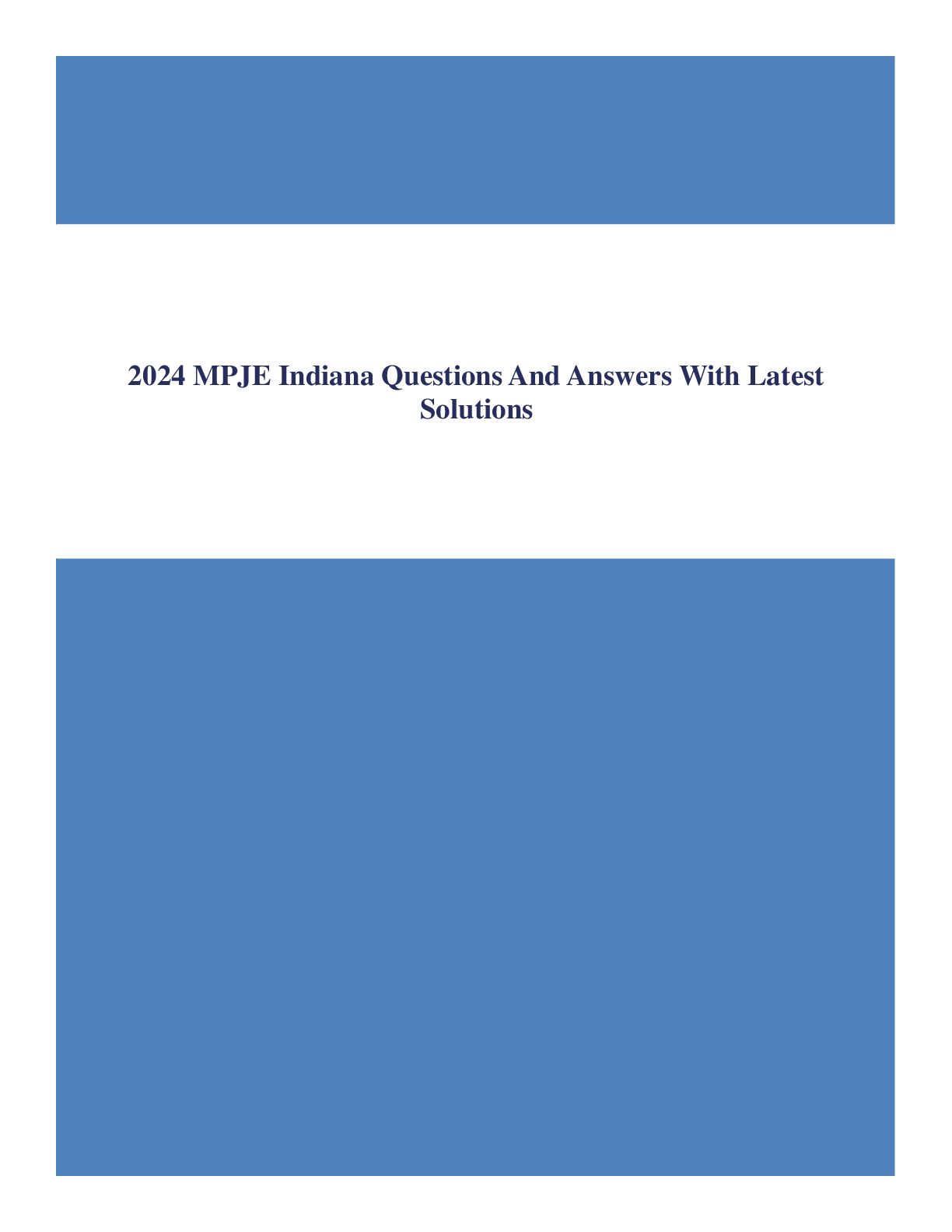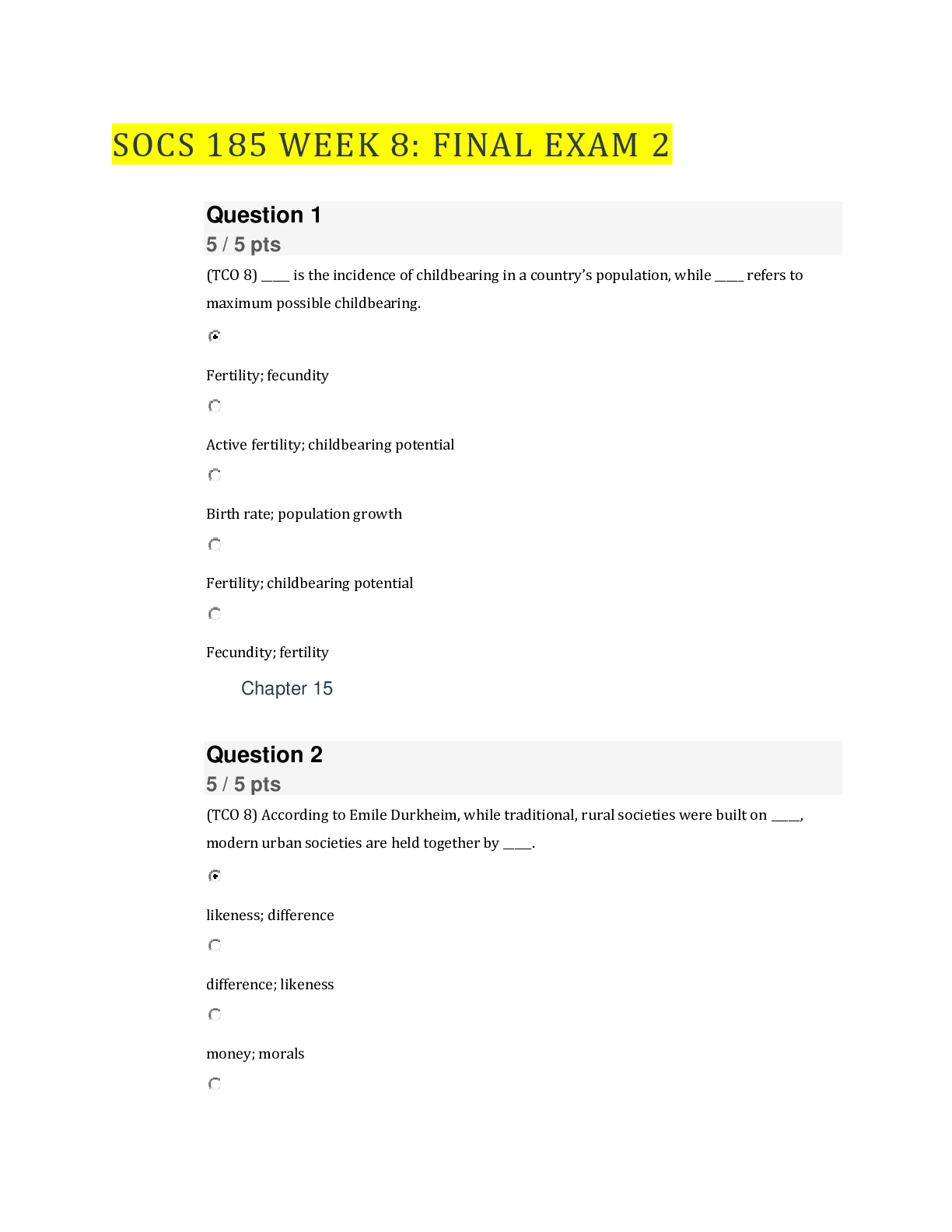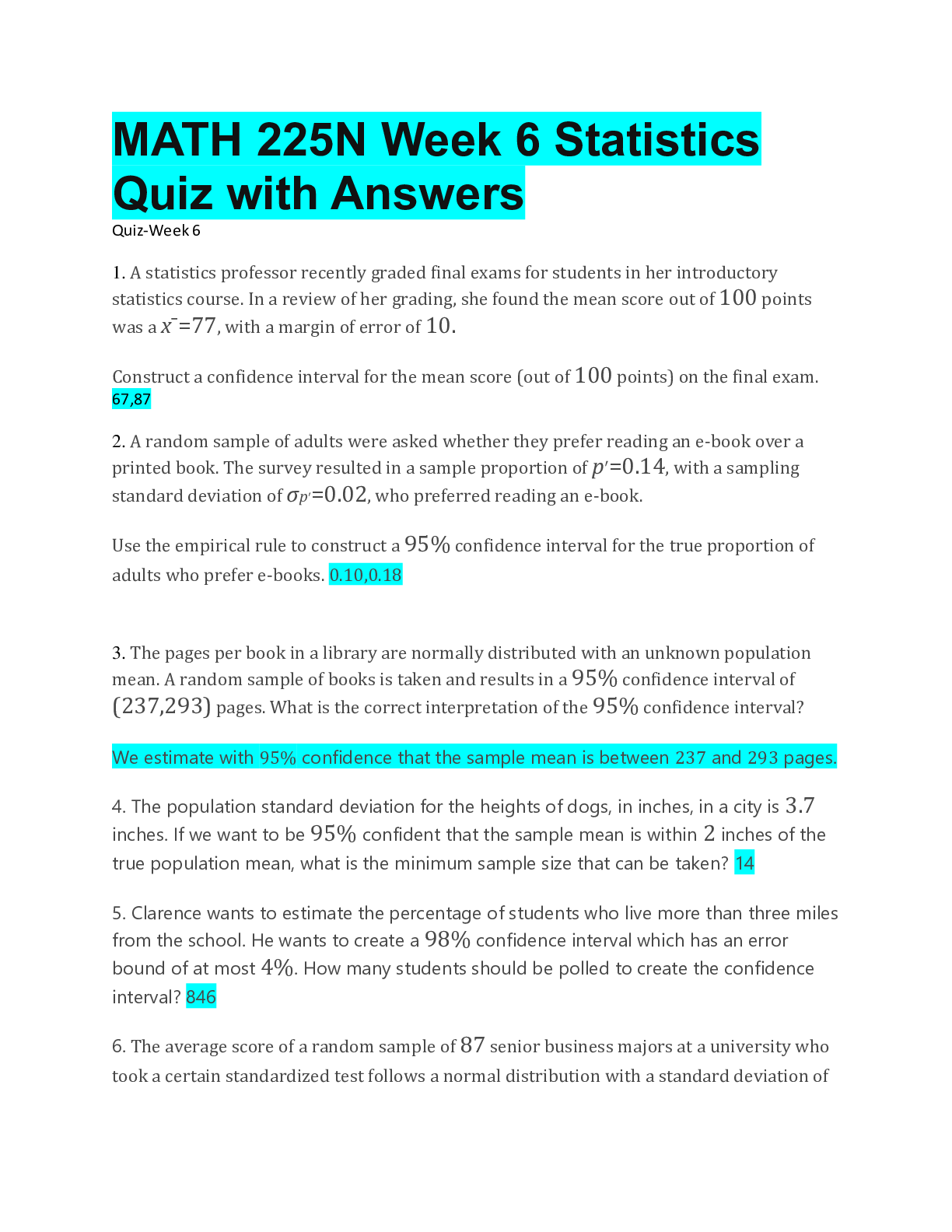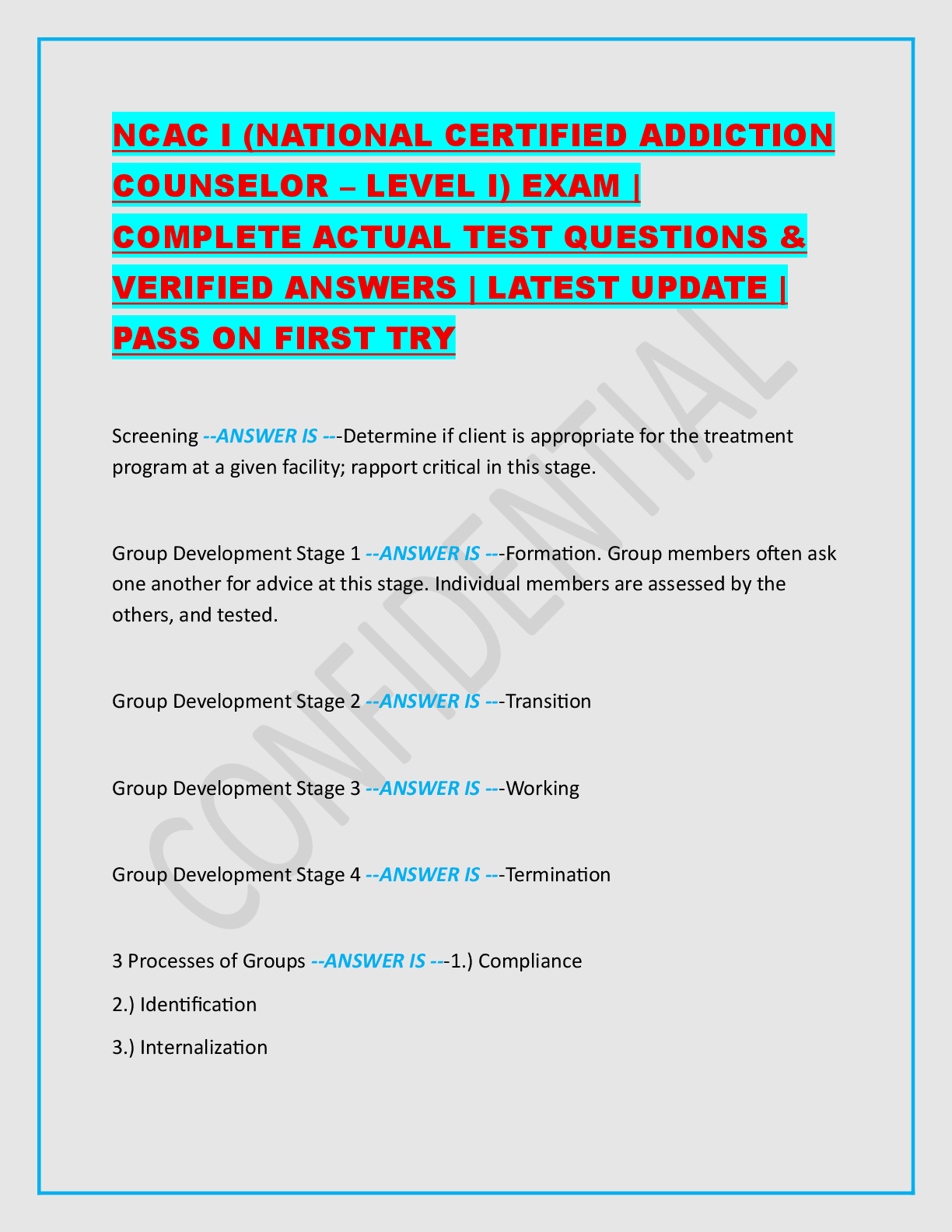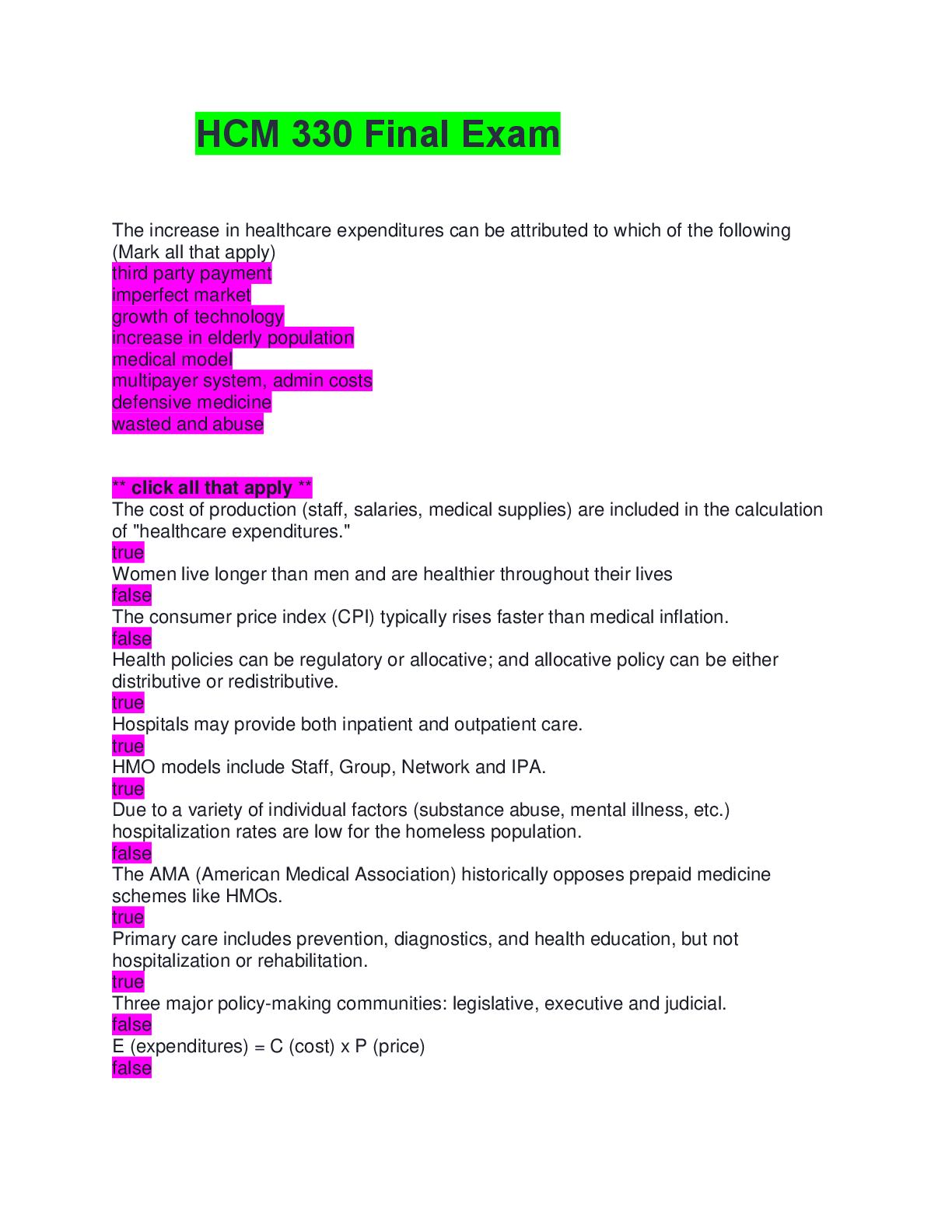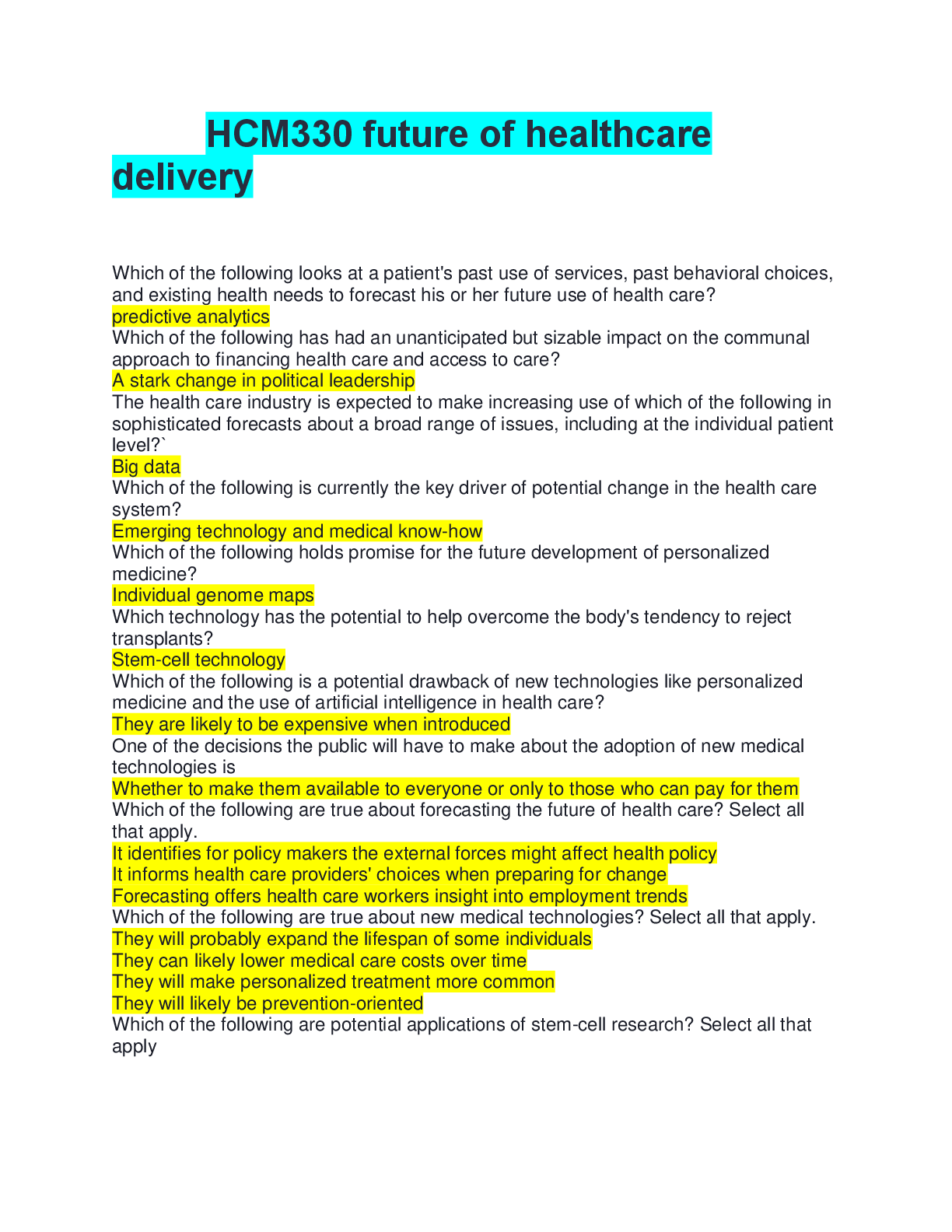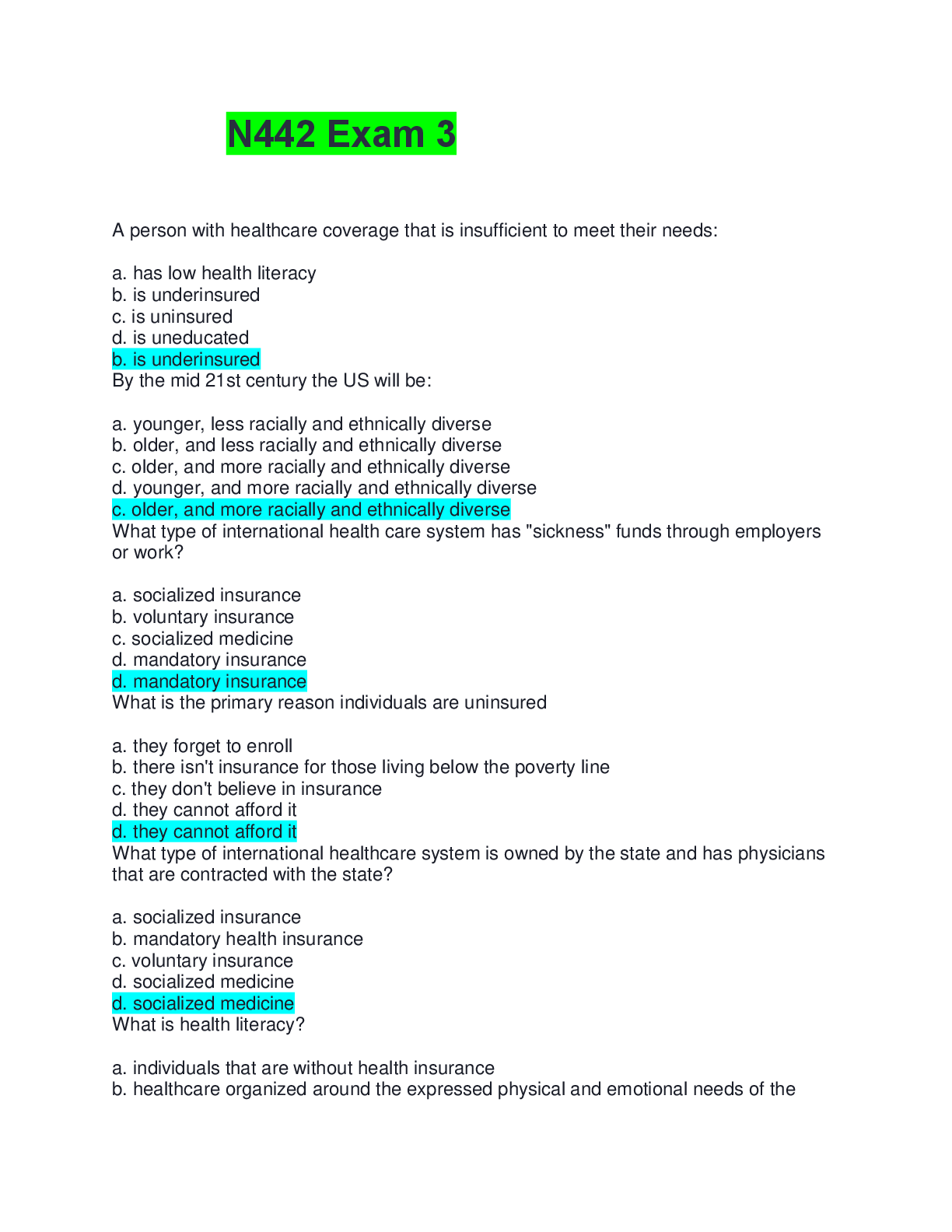Management > EXAMs > MIS 589 Week 2 Quiz with Answers | COMLETE GUIDE (All)
MIS 589 Week 2 Quiz with Answers | COMLETE GUIDE
Document Content and Description Below
MIS 589 Week 2 Quiz with Answers Question 1 1 / 1 pts (TCO B) Two fundamentally different types of data are DSL and ADSL. asymmetric and symmetric. Microsoft and IBM.Correct! digital a ... nd analog. local area and wide area. Question 2 1 / 1 pts (TCO B) Having a conversation with someone using a cellular phone is an example of _____ transmission. simplexCorrect! full-duplex half-duplex analog digital Question 3 1 / 1 pts (TCO B) Which of the following would be considered a type of wireless media? Unshielded twisted pair Shielded twisted pair Coaxial cable Correct! Microwave Fiber optics Question 4 1 / 1 pts (TCO B) Which of the following media can best withstand harsh environmental conditions? Shielded twisted pair Unshielded twisted pair Cat 5 twisted pair Coaxial cableCorrect! Fiber optic cable Question 5 1 / 1 pts (TCO B) Which of the following is not an important factor to consider when selecting media to be used in a network?Correct! Prestige value of the type of media Type of network Cost Transmission distance Security Question 6 1 / 1 pts (TCO B) With which type of digital signaling does the signal always return to zero volts after each bit? Non-return-to-zero signaling Unipolar signalingCorrect! Return-to-zero signaling Data rate signaling Huffman encoding signal Question 7 1 / 1 pts (TCO B) The height of a sound wave is called its frequency. phase. Correct! amplitude. bandwidth. furlong. Question 8 1 / 1 pts (TCO B) In which type of modulation is a 1 distinguished from a 0 by shifting the direction in which the wave begins? Bandwidth modulation Amplitude modulation Frequency modulationCorrect! Phase modulation Codec modulation Question 9 1 / 1 pts (TCO B) The _____ of a circuit determines a circuit’s capacity. frequency Correct! bandwidth phase amplitude loudness Question 10 1 / 1 pts (TCO B) A(n) _____ divides one high-speed communication circuit into several lower speed circuits for the primary reason of saving communication line costs. transponderCorrect! multiplexer inverse multiplexer intelligent terminal codec Question 11 1 / 1 pts (TCO B) Which of the following is true with respect to the data link layer? It accepts streams of bits from the application layer. It is responsible for encoding the bit-stream as a series of electronic voltages.Correct! It performs error detection. It performs routing functions. It organizes data from the physical layer and passes these coherent messages directly to the application layer. Question 12 1 / 1 pts (TCO B) Which of the following is not a controlled access method of media access control? Token passingCorrect! CSMA/CD Polling Roll call polling Hub polling Question 13 1 / 1 pts (TCO B) With contention, Correct! computers wait until the circuit is free before they send data. the server or front end processor works consecutively through a list of clients to determine who should have access to the media. the front end processor must wait for a response from the polled client or terminal. one computer starts the poll and passes it to the next computer on the multipoint circuit. there is never a chance for collision or two computers trying to send data at the same time. Question 14 1 / 1 pts (TCO B) The two sublayers of the data link layer consist of the media access control sublayer and theorrect! logical link control sublayer. network control sublayer. session sublayer. physical sublayer. transport sublayer. Question 15 1 / 1 pts (TCO B) The primary source of error in data communications is echoes. intermodulation noise. Correct! spikes. attenuation. cross-talk. Question 16 1 / 1 pts (TCO B) The loss of power a signal suffers as it travels from the transmitting computer to a receiving computer isCorrect! shielding wires. adding fluorescent lights. adding repeaters to a circuit. adding amplifiers to a circuit. shorting a circuit. Question 17 1 / 1 pts (TCO B) Which of the following is not an error detection method used in the data link layer? Parity checking Cyclic redundancy checking CRC-32Correct! Pulse code checking Odd parity Question 18 1 / 1 pts (TCO B) ARQ means thatCorrect! a receiver that detects an error in a message simply asks the sender to retransmit the message until it is received without error. the common carrier automatically returns queries to the subscriber upon receipt of such queries. a sender is using a data link protocol called asynchronous repeating request. a fiber optic cable meets the American registered quality, a certification standard for use in high-quality data communication transmission lines. a sender is using a parity scheme called array resource quality. Question 19 1 / 1 pts (TCO B) Asynchronous transmission is used to transmit each character simultaneously with all other characters. has a predetermined, fixed time between sending characters. is typically used on multipoint half duplex circuits. uses a continuous series of start bits as an idle signal.Correct! each character is transmitted independently of all other characters. Question 20 1 / 1 pts (TCO B) Calculating the actual throughput of a data communication network is not normally required for synchronous networks because they are so fast.Correct! complex because many factors affect throughput. simple because packet size is the primary factor affecting throughput. not needed for satellite-based networks. far less complicated if the system operates on a contention basis. [Show More]
Last updated: 3 years ago
Preview 1 out of 7 pages

Buy this document to get the full access instantly
Instant Download Access after purchase
Buy NowInstant download
We Accept:

Reviews( 0 )
$10.00
Can't find what you want? Try our AI powered Search
Document information
Connected school, study & course
About the document
Uploaded On
Feb 20, 2021
Number of pages
7
Written in
All
Additional information
This document has been written for:
Uploaded
Feb 20, 2021
Downloads
0
Views
47

